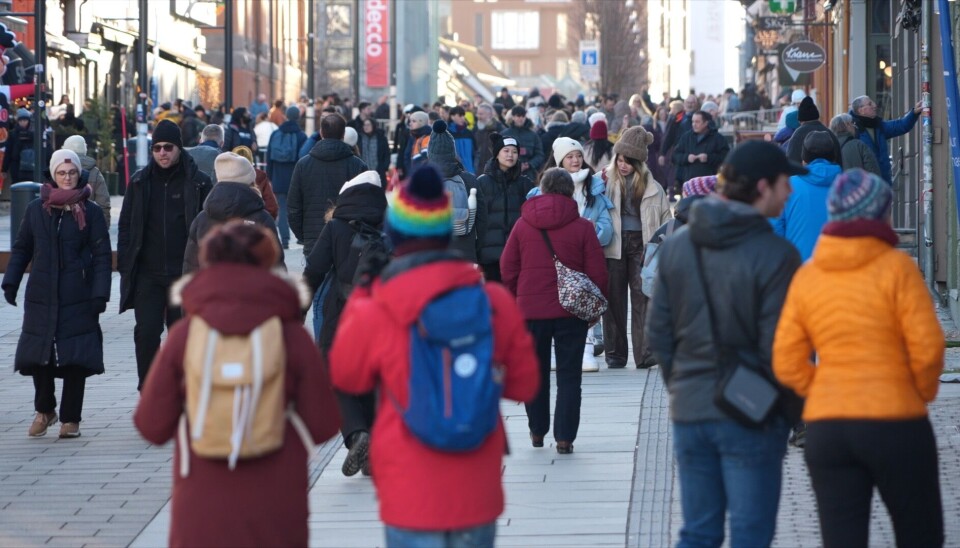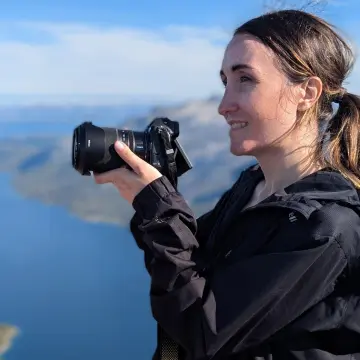
Is Norway's Arctic tourism boom paying off?
While some see tourism as a great opportunity for regional development, others fear it will ruin the pristine nature and drive up local prices.
"When we put our one-bedroom apartment on Airbnb in January this year, it was immediately booked until the end of March," Tromsø resident Terri Souster told the Barents Observer. She and her husband rent out the basement of their house a short walk away from the iconic Arctic Cathedral.
After having a long-term tenant for some years, they realized that now its much more profitable for them to use Airbnb:

“With a long-term tenant, we got 9000 NOK (approx €742) per month. And when we put it on Airbnb, we realized we would make 28000 NOK (€2,309) per month”, Terri Souster said sitting on the couch in the apartment.
"Despite the 22% tax on short-term lets, that is still nearly three times more than you would get from a long-term tenant", she added.
Since the number of direct flights from European capitals to Tromsø increased in recent years, the amount of international visitors in the city has more than tripled. Most tourists come here to see the northern lights, ride a husky sled, go on a whale safari, ski, or try seafood in the local restaurants.

In 2017 Tromsø had 188,464 overnight stays in local hotels, in winter 2023-2024 it was 332,507, according to the NHO Arktis. While locals like Terri increasingly prefer to rent their property via Airbnb, others inevitably struggle to find long-term rent in the city.
The hotel prices have recently been called “more expensive than in Manhattan”, NRK reported earlier.
“If people are complaining about the hotel prices, be early, make the reservation early”, Aid Lillegård, general manager of Thon Hotel in Tromsø told the Barents Observer. She has been working in this hotel for 20 years and says that since 2010 the company has increased the number of employees by nearly one third.
While property owners and accommodation facilities notice significant income, the city’s infrastructure seems not to be ready for such an influx.
"We are basically at the limit of how much traffic we can handle," Tromsø airport director Ivar Schrøen told the Barents Observer earlier.
Most visitors are motivated to see the northern lights. One of the best places to do this is Ersfjordbotn.

Located 20 km from the city centre the fjord offers an iconic setting to see the northern lights away from the bright city lights.
“There are hundreds of tourists every day in the winter here”, Ersfjordbotn resident Bi Haavind told the Barents Observer. She has been living in the area next to the picturesque fjord for 37 years.
It's okay that people are coming here, but it is in a way too much, I think, too many. And it's a problem. For example, they use nature as a toilet sometimes”.
The only toilet facility the place has to offer is the one in a small cafe. But this is not enough. As Bi explained, for three years, locals and the municipality have disagreed on who should be responsible for installing and maintaining toilet facilities in the Ersfjordbotn.
Bi supports the idea of imposing the so-called “tourism tax” that is about to be debated by the Norwegian parliament. The proposed rates of up to three percent would apply to hotel, campground, and Airbnb stays.
Bi is also concerned about the increasing amount of flights into the airport:
“I think it's too many flights now. I think this sort of tourism is not sustainable for the climate and for the social environment.”
For Gaute Svensson, Associate Professor at the UiT Business School, the sustainability of tourism in the North of Norway is an important point to teach his students.

“Northern Norway is extremely attractive for a lot of people because we have pristine nature”, Gaute Svensson told the Barents Observer.
He underlines that the balance to keep nature clean but at the same time to welcome tourists should be the focus.
Nobody wants to see toilet paper and human waste outside”, he says highlighting the issue around Ersfjordbotn. “But here in Norway we can't say to tourists that you're not welcome. Tourism is an industry that has become very important. This is work that will provide food on the table for people in the years to come, no question about it.”
Gaute sees the special “tourism tax” as a suitable response to the increasing tourism: “That would help to allocate between 30 to 50 million NOK (€2,5 - 4,5 million) annually”, he says. The money, according to Gaute should be used, for example, to build toilets and parking spaces. “Northern Norway needs tourism”, he concludes.
Guillaume and Ludivine have parked their 1975 Peugueot next to the bistro at Skibotn - another picturesque fjord 117 km from Tromsø. They come from the French city of Lyon and have been traveling along the North of Norway for several months with their 12-year-old cat Simba.

“We spent winter in the north of Norway, on Senja Island for a couple of months. Senja is more authentic for us and not too famous among tourists like Lofoten is, for example. So it was really really quiet”, Guillaume said.
“Almost every night we witnessed aurora borealis. It was amazing,” - Ludivine said.
The couple says that they are very glad that now it has become much easier to go to Tromsø because there is a direct flight from Paris. Even though they prefer to travel in their van, they say that more of their friends back in France would start choosing Tromsø as a destination.

“I think tourism is very important for all the countries”, - Ludivine says, “In France, now we don't have much snow anymore. So as a result, we have some “ghost ski stations”. We have all the infrastructure now but without people. Restaurants are closed, nobody stays there as there are no more tourists. It's sad”.
The couple are very satisfied with the tourist amenities in Norway:

“I think it's really easy for the tourists here in Norway. A lot of information everywhere, a lot of accommodation or services for the camper, for example,” Guillaume said.
“Tourism is clearly blooming here,” Mats Lindfors CEO of Visit Lyngenfjord AS told the Barents Observer. The company Visit Lyngenfjord AS operates across 5 local municipalities near Tromsø. Before, Mats had been working for 11 years in Finnish Lapland. For one year he has been trying to develop tourism in the mountainous area of Lyngenfjord:
“We have about 250,000 overnight stays per year here. From 2023 to 2024 it increased by 12%. And for the numbers for sales of activities, the increase was even close to 50%”, Mats underlined.
He sees his job as a service to the community, that helps it to flourish:

“The reason for having tourism is that it should deliver a good opportunity for local people to live there and take care of their kids and the elderly. It should deliver welfare for the community by offering job places”, Mats Lindfors said.
He underlines, that tourism offers a great chance for the remote Arctic regions:
“The issue here is that young people are moving away to cities and these small rural communities consist mostly of older people. There are very few taxpayers. Tourism attracts younger people to come work here. That gives tax income and brings kids into the schools and much more inhabitants.”
Mats disagrees with the point that there are “too many” tourists in the area.

“I usually compare to Lapland, where I worked previously. The area where I worked there had around 15,000 people - approximately the same number as 5 municipalities here in Norway. Meanwhile, in that municipality in Finland, we had 64 restaurants altogether. And here something like 6. So there is huge room for improvement. ”
Most of the people the Barents Observer spoke with are happy to see tourists on the streets of Tromsø. The only issue they see is that the increase in tourists has happened too quickly and the city hasn’t had enough time to adapt to the influx.















